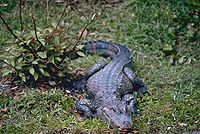
Photo from wikipedia
Bursaphelenchus leoni is redescribed, using morphology, morphometrics and molecular data, based on a population isolated from dead Pinus massoniana in Zhejiang Province, China. It is characterised by a lateral field… Click to show full abstract
Bursaphelenchus leoni is redescribed, using morphology, morphometrics and molecular data, based on a population isolated from dead Pinus massoniana in Zhejiang Province, China. It is characterised by a lateral field with three lines, a 12-15 μm long stylet with small basal swellings, excretory pore located one body diam. posterior to nerve ring, spicules mitten-shaped, dorsally and ventrally arcuate, with lamina smoothly tapering towards broadly rounded distal tip without hook-like process in the Chinese population, condylus broadly rounded with a small dorsally bent hook, rostrum triangle or conical with finely rounded tip. The bursal flap is long, spade-like with posterior margin truncate or irregular. A 2-3 μm long vulval flap is present. The female tail is long and conical (c′ = 5.3-6.9), with the terminus finely rounded, or occasionally pointed. The Zhejiang population of B. leoni is close to B. eidmanni and B. silvestris, which all belong to the leoni-group sensu Braasch et al. (2009). Comparison with the description of B. borealis led to the conclusion that B. leoni and B. borealis are conspecific, the latter being regarded as a junior synonym of the former.
Journal Title: Nematology
Year Published: 2020
Link to full text (if available)
Share on Social Media: Sign Up to like & get
recommendations!